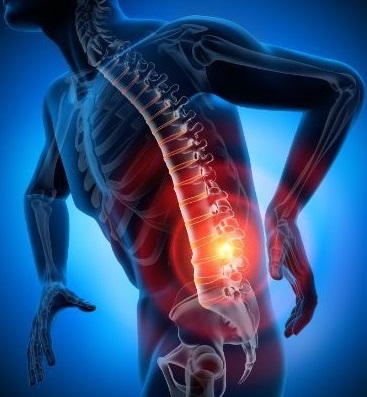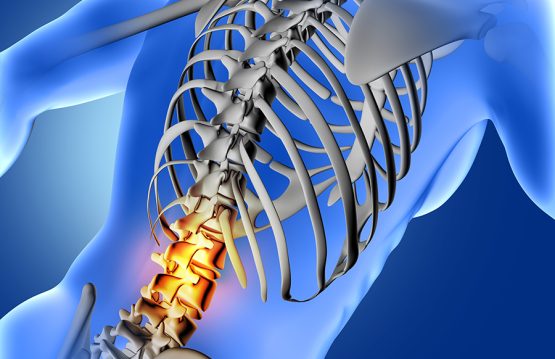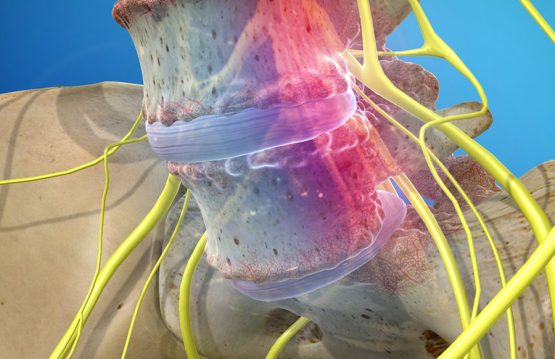Chiropractic treatment has proven to be an effective and holistic option for managing spondylolisthesis, a spinal condition that can cause pain and discomfort.
Spondylolisthesis is characterized by the abnormal sliding of one vertebra over another, and chiropractic therapy offers a non-invasive alternative to conventional treatments. In this article, we will explore how chiropractic can help relieve symptoms and improve the quality of life for those affected by spondylolisthesis.
CONTENT:
- How does chiropractic treatment work?
- Initial assessment and treatment plan
- Chiropractic adjustments and symptom reduction
- Exercises and recommendations for self-care
How does chiropractic treatment work?
Chiropractic treatment is based on the principle that a correctly aligned spine contributes to the optimal functioning of the entire nervous system, and implicitly, to the overall health of the body. The chiropractor’s primary concern is to identify and correct structural imbalances in the spine that may affect the normal flow of information between the brain and the rest of the body.
-
Correct alignment of the vertebrae
Essentially, the spine serves as the central axis of the human body, and therefore any displacement or misalignment of the vertebrae can affect the entire nervous system. Chiropractors use manual manipulation techniques to return the vertebrae to their correct position. This process, called a chiropractic adjustment, involves applying controlled and directed pressure to specific parts of the spine or joints to restore proper alignment.
-
Reducing nerve pressure
Spondylolisthesis can lead to increased pressure on nerves, causing pain and discomfort. Chiropractic adjustments aim to reduce this pressure. This is done by correcting the position of the vertebrae, thus removing any constraint or compression on the nerves. By reducing nerve pressure, chiropractors help improve the transmission of nerve signals and restore normal body functions.
-
Stimulation of natural healing processes
Another component of chiropractic treatment is the stimulation of the body’s natural healing processes. Chiropractic adjustments can improve blood circulation and promote the release of endorphins, the body’s natural chemicals that reduce pain and improve well-being. This holistic approach helps speed up the recovery process and strengthen the body’s ability to heal itself.
-
Treatment customization
Each patient has individual needs and conditions, and the chiropractic approach adapts according to these particularities. Chiropractors consider the patient’s medical history, specific symptoms, and physical assessment to develop a personalized treatment plan. This plan may include various techniques and exercises to optimize the recovery process.
Initial assessment and treatment plan
In chiropractic treatment, the initial assessment is an essential pillar for understanding the specific needs of the patient and developing an effective treatment plan. The chiropractor begins with a detailed discussion of the patient’s medical history, investigating any previous conditions, treatments followed and relevant health details. This conversation provides a comprehensive picture of the patient’s medical background and provides crucial information for developing a tailored treatment plan.
Development of the treatment plan
Based on the information obtained from the initial assessment, the chiropractor develops a personalized treatment plan. This plan is tailored to the patient’s individual needs and aims to correct the problems identified during the assessment. The main elements of the treatment plan include:
- Regular manual adjustments: The chiropractor uses manual manipulation techniques to adjust the spine and joints, helping to restore proper alignment and reduce nerve pressure.
- Strengthening exercises: The patient can be recommended specific exercises to strengthen the muscles around the spine, thus supporting the healing process and preventing recurrence.
- Pain Management Techniques: The chiropractor may introduce pain management techniques, including ice/heat therapy or relaxation techniques, to relieve discomfort and improve the patient’s quality of life.
- Follow-up schedule: The treatment plan may include regular scheduling for adjustments and periodic assessments to monitor progress and adapt interventions as the patient’s condition evolves.
Chiropractic adjustments and symptom reduction
1. Chiropractic Adjustments – Precise Alignment Technique
Chiropractic adjustments are the core of chiropractic therapeutic intervention and are essential in treating spondylolisthesis. Furthermore, these adjustments involve the use of precise and controlled manual movements applied to the vertebrae and joints. In the case of spondylolisthesis, where one vertebra slips in front of the one below, these adjustments are meant to correct the incorrect position and restore normal spinal alignment.
2. Reduction of vertebral slippage
Spondylolisthesis causes the vertebrae to slip abnormally, which can lead to nerve compression and pain. Moreover, chiropractic adjustments target exactly this problem, providing a non-invasive solution to reduce vertebral slippage. The chiropractor applies specific pressures to guide the vertebra back into the correct position, thereby eliminating tension and excessive pressure on the nerves.
3. Relief of nerve pressure
Excessive pressure on the nerves due to spondylolisthesis can cause pain and discomfort. Chiropractic adjustments not only correct spinal alignments, but also reduce associated nerve pressure. By removing nerve compression, the chiropractor facilitates the transmission of nerve signals, thereby helping to reduce symptoms such as pain, tingling or weakness in the affected areas.
4. Patient experience
Many spondylolisthesis patients report significant improvement after regular chiropractic treatment sessions. They notice a reduction in pain and an increase in mobility in daily activities. Chiropractic adjustments can help restore a normal state of the spine, allowing patients to once again enjoy an increased quality of life and regain control of their physical functions.
5. Continuation of treatment and prevention of relapses
Chiropractic adjustments can have an immediate impact on symptoms, but it is important to recognize that treating spondylolisthesis requires ongoing commitment. The chiropractor will develop a long-term treatment plan that may include regular adjustments, strengthening exercises, and education to properly manage your posture and daily activities. This holistic approach not only relieves existing symptoms, but also helps prevent relapses and maintain a healthy spine in the long term.
Exercises and recommendations for self-care
In the treatment of spondylolisthesis, muscle strengthening exercises are an essential element of the treatment plan. Chiropractors can develop a personalized set of exercises tailored to the patient’s specific needs and fitness level. These exercises aim to strengthen the muscles around the spine. Thus, the affected area is stabilized and unwanted movements of the vertebrae are prevented.
-
Spinal Stabilization Exercises
To strengthen support for the spine, patients may be instructed to perform exercises that focus on stabilizing the spine. Stabilization exercises improve muscle strength and control around the vertebrae, helping to maintain proper alignment and prevent relapses. Additionally, these may include exercises with fitness balls, planks, or other movements that emphasize the involvement of core muscles.
-
Self-care and prevention techniques
In addition to exercise, chiropractors offer advice to patients on self-care and prevention techniques. These may include:
1. Posture correction: Educating patients about correct posture is crucial. Chiropractors offer practical advice for maintaining balanced posture during daily activities and at work.
2. Muscle relaxation techniques: Chiropractors can train patients in muscle relaxation techniques, which can reduce tension and discomfort in the spinal area.
3. Managing stress: Stress can contribute to muscle tension and deterioration of spinal health. Recommendations for managing stress may include deep breathing techniques, meditation, or other relaxation methods.
4. Monitoring physical activities: Chiropractors can advise patients on appropriate physical activities and how to avoid movements that may aggravate spondylolisthesis. Special attention is paid to how patients lift objects or carry out their daily activities.
-
The Importance of Continuity in Self-Care
Self-care exercises and techniques are often an essential part of a long-term maintenance regimen. Continuing exercises and self-care post-symptom improvement reinforces results and prevents relapses in spondylolisthesis. Patients should incorporate these practices for a healthy spine and to sustain the long-term benefits of chiropractic treatment.







